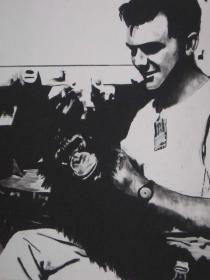solo projects
The Great Reclamation
Comrades of the world.
Welcome to The Great Reclamation.
This year, 2421 marks the 400th anniversary of our great undoing, known to all of us as ‘Elizabeth’s Day’, the day which ushered in the darkest period of human history.
With the loss of so many lives, so went the knowledge, culture and technologies that were taken for granted by our fore fathers.
For a while humanity teetered on the precipice of oblivion, the survivors reduced to mere scavengers, existing off the carrion off a once great but murderously arrogant civilisation.
Just 400 years after the great undoing we can now marvel at the progress and discoveries made in all forms of human endeavour. Some even posit that many of our technologies are improvements upon those of the old world.
It is to this end, that the unifying world synod of 2418 held here in Dortrecht called for an exposition celebrating human achievement and progress.
In this exhibition, researchers from around the world would gather to share their knowledge and technologies, to demonstrate our industry and enterprise.
Visitors to The Great Reclamation will be left in no doubt that humanity is at a momentous point, the dark ages behind us and a new age of enlightenment. Waiting to be embraced. The Great Reclamation stands as testament to our modern world
‘The Great Reclamation is a demonstration of recovery after some unspecified traumatic event..
Set in a future time, It speculates on how a society would attempt to understand and reproduce ideas and technologies which existed in the twenty first century. Participating artists are Simon Hollington, Andy Marsh (UK) Adam Norton, Vanila Netto, Simon Yates ( Australia)
Footnotes:
'St Elizabeths flood' happened in 1421 (2421)and engulfed large areas of
Holland, making Dortrecht an island and killing over 100,000 people.
In 1618(2418) The Synod of Dortrecht was an important church meeting
that settled ideological differences which were bringing Holland to the
brink of civil war.
![]()
‘A Canticle for Leibowitz’ is a novel by Walter M. Miller.
It begins many centuries after nuclear war, in which the detritus of human technological and scientific knowledge are preserved (but not understood) by a Benedictine-like monastery. So little is their understanding of the archives that they cannot differentiate between plans for a nuclear reactor and a shopping list.
Six centuries later, the study of the archives has led to the nascent comprehension of pre-war knowledge and deep within the monastery the glow of electricity promises delivery from the dark ages.
Six centuries after that, the old technologies have been fully understood and the world is yet again on the brink of nuclear war. A small group of monks are sent into space with their technological relics to escape a second apocalypse and colonise another planet.
We never find out if this breaks the cycle of discovery and destruction, or merely continues it on a different world.
Published in 1960, fifteen years after the end of World War ll (in which Miller served as part of a bomber mission that destroyed the Benedictine Monastery at Monte Casino) and two years before the Cuban Missile Crisis ‘A Canticle for Leibowitz’ is obviously framed by the hot/cold war between America (and it’s allies )and the Soviet Bloc.
![]()
![]()
Although the 1962 Cuban Missile Crisis is seen as the closest the world came to nuclear war, the paranoia and a very real fear of a nuclear apocalypse continued throughout the subsequent decades, with many books, films and television programs speculating on the what form (if any) society would take after such total devastation. Many suggested a small, devastated population left to enter a new dark age, without an industrial or technological infrastructure.
Humanity, in essence would have to start over again. Luckily, up until this point, these speculations remained just that, and the apocalypse that has been forecast in many forms throughout human history had again been postponed.
However, earlier this year, environmentalist James Lovelock re-iterated his belief that by the end of this century about 80% of humanity will have been destroyed by climate change and food shortages, and that this is inevitable (1).
‘Global Warming poses a dire threat to human civilization that is second only to nuclear weapons’, (2) states ‘The Bulletin of Atomic Scientists’, who in January 2007 put forward the minute hand of the Doomsday Clock to Five minutes to midnight, two minutes closer to the midnight of Doomsday than it was during the Cuban Missile Crisis.
The Bulletin Claims ‘ We stand at the Brink of a second nuclear age’, (3) with as many as 27,000 nuclear weapons (2000 of which are capable of being fired within minutes) available to be used in conflicts prompted by climate change.
Science Fiction or Science Fact?
Either way, in some form the apocalypse is back, and for many of us, it feels like it never went away.
Welcome To The Great Reclamation.
This exhibition does not really concern itself with these causalities, (I just thought I would mention them to cheer you up) but it does share elements of speculation and futurology. In societies increasingly mediated by digital technology, how many of us really understand how things work? How many of us can fix machines as they break down? Even within a single generation, the bulky two-piece round dial telephone of my youth is almost unrecognisable to children with tiny push button mobile phones. If a child heard my telephone ring, would they pick up the receiver--or look for the button to press to enable them to answer?
But it’s not just about how we understand everyday technology, more importantly it's how we understand the social relations and cultural constructions that prior knowledge allows us to comprehend--and conversely, often to question.
If the knowledge and histories that form our common understanding of civilization(s) were lost, could or would we re-evolve in a very different way?
How would a future that found itself in our past relate to its antecedents?
In contemporary society we have archaeology and history as disciplines attempting to explain what went before--but what of a society in which these disciplines had long been lost?
On individual levels, we have family and/or social structures that nurture us (for better or for worst) to understand the world around us, but if all these were taken away how would we relate to each other? Would new knowledge and structures be forged from the redundancy or would we be doomed to repeat the same cycle again and again? Walter M. Miller never answered that question in ‘A Canticle for Leibowitz’, and neither shall I, as I guess you never really know until it happens.
So, to quote the exhibition's press release, but changing the tense, ‘Humanity teeters on the precipice of oblivion’--and perhaps Lovelock's nihilism is well justified.
Raoul Vaneigem interprets nihilism as being ‘born from the collapse of myth’ in which 'all traditional values are sucked into the abyss and destroyed’ (4) and references Vasily Razanov as providing ‘The best’ definition of nihilism: ‘The audience gets up to leave their seats. Time to collect their coats and go home. They turn around … No more coats and no more home’. (5)
Yet, as has happened many times before, the apocalypse will be postponed and we’ll remain here with our all our shows, coats and homes. Maybe we haven’t reached the end of history quite yet. After all, ‘History is just one fucking thing after another’. (6)
The Great Reclamation truly stands as testament to our modern world.
(1) James Lovelock, The Guardian, 1st March 2008
(2) The Bulletin of Atomic Scientists: www.thebulletin.org 2008
(3) Ibid.
(4) Raoul Vaneigem, The Revolution of Everyday Life, Rebel Press 2003 (1967).
(5) Ibid.
(6) Alan Bennett, The History Boys, 2006.



.thumbnail.jpg)
